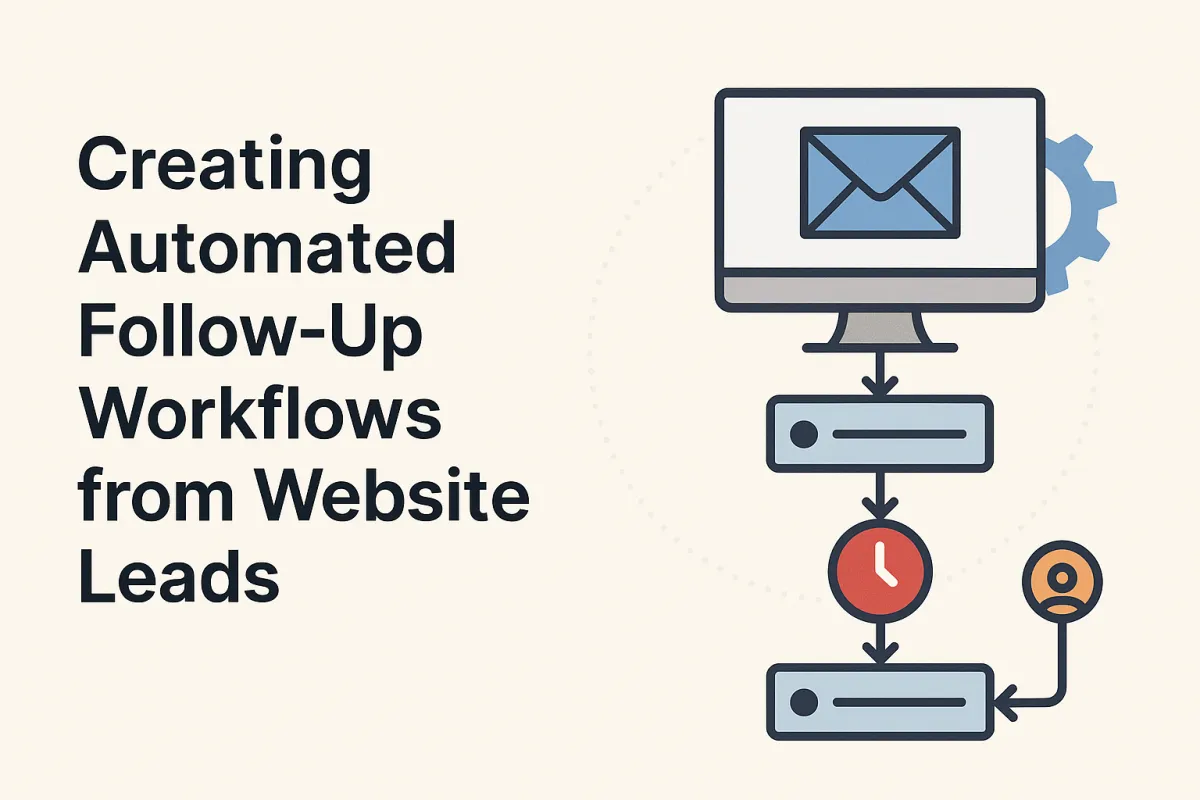
Creating Automated Follow-Up Workflows from Website Leads
In today’s digital-first world, generating leads through your website is only half the game. The real victory lies in what you do after that initial contact. Did you know that response time is one of the biggest factors in whether or not a lead converts into a paying customer? In fact, studies show that reaching out to leads within 5 minutes increases your chance of conversion by 900%.
Yet, many businesses still rely on clunky, manual follow-up systems that are both time-consuming and easy to overlook. If you’ve ever watched a warm lead go cold simply because no one followed up in time, you know just how costly this can be. That’s where automated follow-up workflows come in—a strategic approach that ensures no lead slips through the cracks, no matter how busy you are.
This comprehensive guide will walk you through the what, why, and how of creating automated follow-up workflows from website leads. Whether you're a small business owner, marketer, or entrepreneur, you'll learn actionable strategies, tools, and tips to streamline your lead management, boost conversions, and grow your business with smart automation.
Understanding the Concept: Definition and Key Concepts
What Is an Automated Follow-Up Workflow?
An automated follow-up workflow is a sequence of pre-defined, rule-based actions triggered by a lead’s behavior or characteristics—like filling out a contact form on your website—designed to engage them, provide value, and ultimately convert them into customers.
These actions might include:
Sending a welcome email
Scheduling a follow-up reminder
Assigning a salesperson
Dripping educational content
At its core, automation takes over the repetitive admin work, allowing your team to focus on high-impact tasks like closing deals and personal relationship building.
Historical Background and Evolution
Before automation, follow-ups were entirely manual: writing emails, making calls, and logging everything in spreadsheets. This was inefficient and prone to human error. Over the past decade, tools like Go HighLevel (GHL) have changed the game—bringing automation, personalization, and CRM together into a seamless system.
Key Benefits of Automated Workflows
Faster Response Time: Respond to leads instantly.
Improved Conversion Rates: Keep your brand top-of-mind.
Enhanced Customer Experience: Deliver relevant and timely content.
Scalable Systems: Manage high lead volumes without more staff.
Consistent Communication: Never miss a follow-up opportunity.
Why It Matters for Today’s Businesses
According to HubSpot, 80% of leads never convert into sales—often due to poor or delayed follow-up. By implementing automated workflows, you can:
Boost Profitability: Faster responses = more sales, lower cost.
Support Business Growth: Scale outreach without scaling team size.
Improve Operational Efficiency: Say goodbye to manual errors.
Differentiate from Competitors: Be proactive where others are reactive.
Effective Strategies to Master the Concept
Step 1: Capture Leads Automatically Using Smart Tools
Use optimized forms, chatbots, and landing pages to collect data.
Recommended Tools:
Go HighLevel: Form builder, CRM, automation
Namecheap: Domain management
Cloudflare: Site performance and security
Step 2: Define a Multi-Stage Follow-Up Schedule
Plan a sequence that delivers value over time:
Immediately: Thank-you email
Day 1: Send helpful resource
Day 3: Offer a free consultation
Day 7: Case study or testimonial
Day 10+: Ongoing nurture content
Step 3: Personalize Each Message
Use collected data to tailor content based on interests, company size, industry, etc.
Tips:
Use merge fields and dynamic content
Segment with tags in GHL
Keep messages concise and easy to read
Step 4: Use Multi-Channel Marketing Automation
Go beyond email—leverage SMS, phone reminders, and social media.
Go HighLevel supports:
SMS
Email
Voice drops
Facebook/Instagram Messenger
Step 5: Track, Analyze, and Continuously Optimize
Measure what matters and make iterative improvements.
Tools:
Google Analytics
Search Console
Google Business Profile
ClickUp or Notion for project tracking
Common Mistakes to Avoid
Overloading Messages: Keep it short and focused.
Sending Generic Templates: Personalize every touchpoint.
Ignoring Multi-Channel: Meet leads where they are.
Skipping Data Analysis: Optimize what you measure.
No Clear Plan: Map your workflow before automating.
Getting Started: Practical Steps
Set Up Your CRM & Automation Tool: Start with Go HighLevel.
Create Smart Lead Forms: Gather actionable data.
Define Lead Stages: Cold, warm, hot, or custom.
Build a Follow-Up Sequence: 7–14 days, multi-channel.
Personalize with Tags & Logic: Targeted, relevant content.
Test and Refine: Launch, measure, improve.
Frequently Asked Questions
What is the best software for creating follow-up workflows?
Go HighLevel (GHL) is one of the most powerful all-in-one tools, supporting CRM, automation, form building, email, SMS, voice drops, and integrations—all from a single dashboard.
How quickly should I follow up with new website leads?
Within 5 minutes is ideal. Automated responses help you capture the lead’s attention while they’re still engaged.
Can I personalize automated messages?
Yes! Use merge fields, dynamic logic, and tags to personalize messages based on user data. This improves engagement and builds trust—even at scale.
Final Thoughts
Automated follow-up workflows aren’t just convenient—they’re a necessity in today’s competitive market. By implementing smart tools, personalized messaging, and strategic scheduling, you can turn website traffic into lasting customer relationships, without burning out your team.
